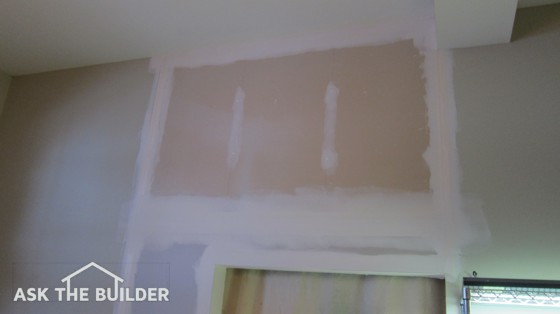What’s in This Issue?
Happy Easter and Passover
Abbreviated Newsletter & Stain Solver
FOLLOW ME ON TWITTER
Friendly Question Reminder!
If you have a question for me, don't hit the Reply button just yet. Go immediately to my web site and type in the keywords about your problem into my Search engine. The search box is at the top of every page of my web site. You could have your answer in seconds if you do this! Please pay attention to all links you see at my web site. The exact products and services you often need are right in front of you, and you might be ignoring them.
Happy Easter and Passover
I drove back to Cincinnati, Ohio to spend Easter with Kathy and Kelly. Tristan is up at school as his break was three weeks ago. Meghan came with me as did Brent the videographer. We really lucked out as the weather so far has been perfect. We're here just as Spring is really coming on strong, which means I get to see two springs this year! Spring won't happen in New Hampshire for another month I'm told. When we left this past Wednesday morning, Loch Winnisquam was still choked with ice, although there was open water. In fact, it looked like a geology lesson in plate tectonic with the slabs of ice moving randomly about. But an hour ago, I got a message from a resident that the lake is officially iced out as of today. Woo Hoo! Get out the kayak!

Tomorrow, Easter, is an honored tradition at the Carter house. It's a no-holds-barred scramble for the foil-wrapped dark chocolate Easter eggs. Because my left hip is bothering me, I'll not be able to hip check my kids so much as we race for the eggs. I'm addicted to the those darned things. Now I'll have to start walking five miles a day until I burn off that chocolate I'll accumulate over the next few days.
Abbreviated Newsletter and Stain Solver
Because of the holiday, this is an abbreviated newsletter. Since the last issue, I've added over 1,000 new subscribers, so if you're new, this is NOT the normal newsletter. Next week you're going to get a doozy of a newsletter. Wait until you see all the videos I just loaded to the website. Yeowwwww! Buy popcorn at the store this week. You'll need it.
What's more, I received an email 90 minutes ago that really put me in a pickle. Last week I announced a huge sale - 25 percent price reduction - on my Stain Solver. If you're a new subscriber, please consider looking at it. Well, the sale ends in less than 24 hours. Because it was a holiday weekend, I decided a few days ago NOT to send out a reminder. I just thought you would want to spend the time with your family rather than shop.
You need to know I own Stain Solver. It's not some product I hawk as a spokesperson. Kathy - my wife - and I launched this product about 14 years ago. But right now Kathy and Ellen (Ellen runs the Stain Solver business) are really upset at me because of all the overtime that happened over the past few days at the warehouse.
Furthermore, I know that the next across-the-board sale where you get a promo code for 25 percent off anything in my store is NOT going to happen for awhile. I will have a special on selected items, but no big sale is on the horizon.
I'm in the dog house with Kathy and Ellen. In fact, I was enlisted Thursday morning for four hours to mix and pack Stain Solver myself! You may think, big deal, but realize that just 12 hours before this I was still in a car driving from New Hampshire to Cincinnati, and I'd been in that car 15 hours! As fast as I was mixing and packing, it was disappearing. It was a record week of sales, and Ellen, Kathy, Roger, Gail, John, etc. are beat. The last thing THEY want are more orders!
But back to the email - Suzanne Weinstein of Wesley Chapel, Florida wrote to me just minutes ago:
Subject Line: WOW! (all caps - I didn't make that up)
"I cannot believe how wonderful my tile floors look after using Stain Solver. I actually have only cleaned one part because I wanted to see the before and after. It is amazing. I was VERY skeptical that your product could be as good as advertised. My Dad told me I was wasting my money (I just emailed him several pictures to show him the difference!). Your product arrived only 3 ½ days after ordering. I am so impressed. Thanks for an outstanding product."
Sue sent a photo that you just can't believe. It's a white-tile floor with half the room black grout and the other half is WHITE grout. You can see why she wrote to me, as she never thought the grout would be white again.
Thus my dilemma. I felt obligated to share Sue's email because the product really works. If you want to clean just about anything, Stain Solver can do it. I write this at great risk as Kathy, Ellen and the rest of the crew are going to keel haul me if you respond as I think you might. But maybe, just maybe you won't get this email until Monday when it's too late.
This huge event is over in less than 24 hours. If you want a heck of a deal, you need to act now.
The promo code is:
A regular newsletter is coming in about a week. Lot's of great news and some tool reviews around the corner.
Thanks again!
Tim Carter
Founder - AsktheBuilder.com
AsktheBuilder.com

